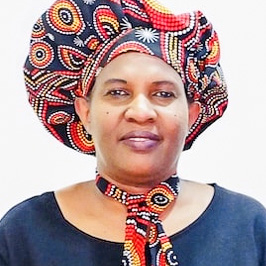By Kilimokwanza.org
On a warm morning in Kenya’s Makueni County, a farmer hoists two sacks of pigeon peas onto a waiting motorbike. Her fields—once depleted by years of erratic rainfall—now show steady recovery: soils are restored, seeds are climate-resilient, nearby aggregation points buy her harvest at competitive prices, and a weather alert on her phone shows she has exactly four hours before the afternoon rain.
For experts heading into the second week of COP30 in Belém, Brazil, scenes like this represent more than hope—they represent what’s possible when financing, science, extension services and markets align. And they define what Africa insists COP30 must deliver: climate action that starts—practically, urgently—with smallholder farmers.
“If the world wants real climate resilience, it must begin in the soil, in the seed, and in the hands of the African smallholder,” AGRA President Alice Ruhweza told reporters ahead of the high-level negotiations. “This COP cannot be about new promises. It must be about delivery.”
A Continent at a Crossroads
Africa’s agricultural sector supports more than 70 percent of the continent’s jobs. A bad season can trigger food price inflation, income shocks, and political instability. For many leaders at COP30, the urgency is unmistakable.
The Belém Declaration on Hunger, Poverty, and People-Centered Climate Action has already called for accelerated investment into climate adaptation and resilient food systems. More than USD 2.8 billion in climate-smart agriculture commitments have been announced to date.
But the real test, experts warn, is whether those resources reach farmers fast enough to prevent the next drought or flood from undoing years of progress.
“Africa does not lack commitments. What we lack is delivery at the scale and speed our farmers deserve,” President Ruhweza emphasized. “This is the moment to turn existing finance into real results—better soils, better seeds, better markets.”
The Soil Question: A Foundation for Resilience
Healthy soils are now centre-stage in Africa’s climate strategy. The African Union’s 10-year Fertilizer and Soil Health Action Plan outlines a continental path to restore degraded lands and close Africa’s chronic yield gaps.
The plan demands science-driven action: extension services that reach villages, functional input markets, and country-level tracking of hectares restored and productivity gains achieved.
For President Ruhweza, this clarity is overdue.
“We know how to restore Africa’s soils. The science exists. The policies exist. What we need now is for governments and financiers to back these plans with action that farmers can feel with every planting season.”
Seeds: The Slow Link Holding Back a Fast-Changing Climate
Even when climate-resilient and nutritious crop varieties are available in research centres, many remain stuck in bureaucratic pipelines for years. The lag between scientific discovery and farmer access often proves costly in a warming world.
Tools such as AGRA’s SeedSAT—and emerging regional regulatory reforms—show how delays can be sharply reduced. At COP30’s AgriZone, innovators showcased heat-tolerant maize, disease-resistant beans, and AI-guided advisory platforms.
“A seed sitting in a laboratory cannot help a farmer,” Ruhweza said. “Releasing and distributing improved varieties faster is one of the most transformative things Africa can do.”
Markets and Finance: The Missing Links
Experts stress that even the best seed and soil health strategies will fail without reliable markets. corridor-based systems—linking surplus-producing areas to urban demand hubs—are gaining traction. These corridors integrate storage, cold chains, cross-border standards, and value-chain financing.
AGRA’s consortia approach, which brings together agro-dealers, anchor firms, cooperatives, and financial partners, has become a model for strengthening local markets and reducing post-harvest losses.
“Farmers succeed when they are connected—not isolated,” said Ruhweza. “We must scale systems that make private investment viable and predictable. That is how smallholders move from survival to growth.”
The Debate: Act Now or Wait for Perfect Data?
Some negotiators argue that more detailed safeguards, standardized data systems, or new financing windows must come first. But practitioners warn that waiting risks deepening hunger and poverty.
Africa already has strong accountability tools:
- the AU Soil Health Action Plan,
- the CAADP Biennial Review,
- and the Emirates Declaration on Food Systems, endorsed by more than 130 countries.
AGRA is now coordinating cross-border scaling of proven solutions—efficient seed systems, soil restoration initiatives, and corridor-based market frameworks.
“We cannot”—Ruhweza stressed—“build perfect systems while communities are losing harvests to droughts and floods. We must improve as we deliver, not delay delivery.”
The Choices Before COP30
With negotiations entering a critical phase, Africa’s stance is firm: COP30 should mark a shift from pledges to practical implementation—especially for women smallholders who carry a disproportionate share of agricultural labour.
The stakes could not be clearer.
“If we get this right, African farmers will thrive within seasons—not decades,” President Ruhweza said.
“If we fail, we will be explaining to our children why hunger rose during a decade full of promises.”
As the woman in Makueni sends off her pigeon peas to market, she represents both the progress that is possible and the millions still waiting for climate action to reach their soil.
Belém, Africa’s negotiators argue, must ensure that she is no longer the exception, but the norm.
